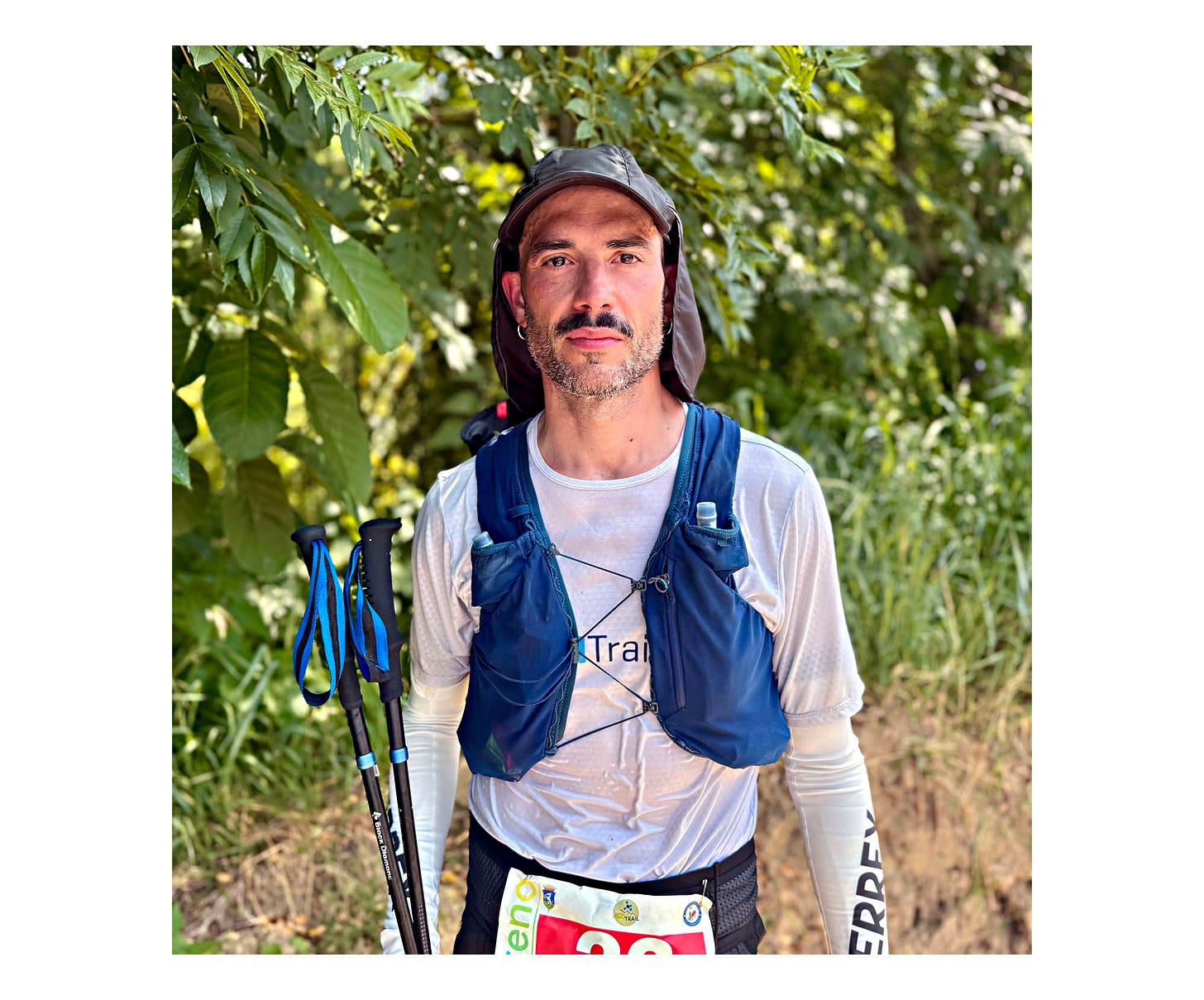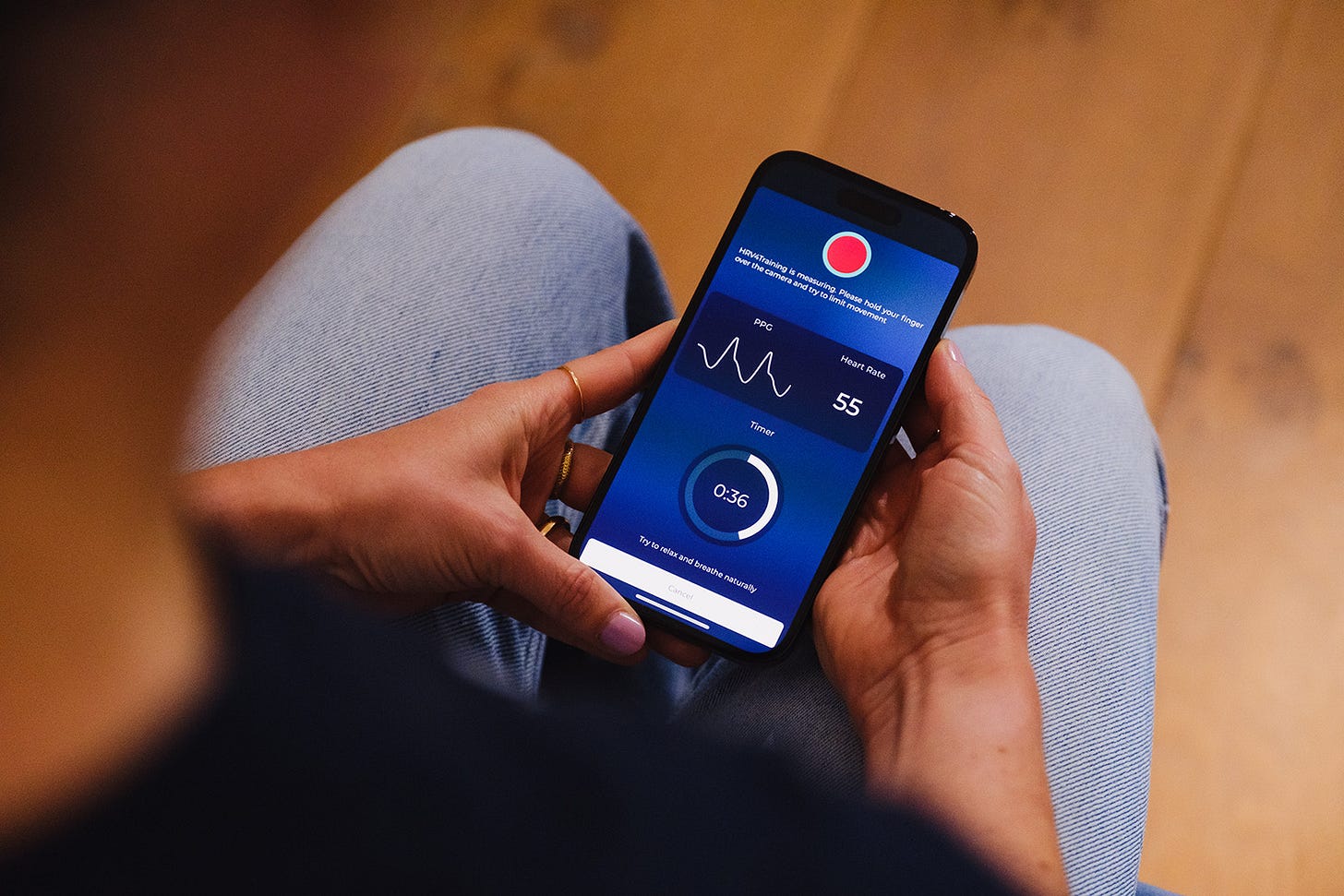As we head into warmer months here in Italy, I wanted to cover something that is still missing in my blog, i.e., the relationship between The Heat and HRV.
Let’s break it down, in particular in the context of acute and chronic changes, and how these can differ.
The Heat and the Autonomic Nervous System
Environmental stressors like the heat elicit a physiological response through the autonomic nervous system (just like everything else!).
In hot environments, your body prioritizes cooling down, increasing sympathetic activity to promote sweating and blood flow to the skin. This shift toward sympathetic dominance typically lowers HRV, especially when heat disrupts sleep or recovery, as it can happen when environmental temperature changes. As Bruce-Low et al. showed in 2006, elevated temperatures reduce HRV due to this thermoregulatory stress.
The link between the heat and HRV is, however, not so simple.
Now let’s talk intentional heat exposure, like using a sauna or a hot bath. While several studies suggest that repeated heat exposure can be beneficial for athletes, even outside of hot conditions, what we are interested in here is simply the impact on HRV.
What the research has shown (e.g., Stanley et al.) is that repeated heat exposure increases blood plasma and also boosts morning HRV. This increase in HRV makes sense: more plasma volume supports better cardiovascular regulation (e.g., more stable blood pressure) via the baroreflex, and thus promotes a more parasympathetically dominant state at rest, as heart rate can be lower given the higher stroke volume. The link between increased plasma volume and increased HRV has been shown multiple times in the scientific literature (see Buchheit et al.).
Thus, saunas and hot baths may increase HRV over time, while acutely (like during or even for a few hours after the stressor), HRV is likely lower, which is something we can see often when environmental temperature changes and we are not adapted to this new stressor.
Hence, I think this is more about repeated exposure than about environmental temperature changes vs intentional heat exposure, and we can reconcile the differences in study outcomes by looking at the acute effect (reduced HRV) vs the chronic effect (increased HRV, when positively responding to the stressor).
Keep in mind that the acute effect of a stressor might have nothing to do with its chronic effect (!). While this seems obvious, many people are wildly extrapolating, using wearables to “understand what stresses them and remove such stressors from their life” (e.g., the heat, a type of food, etc.), which is a widespread misuse of HRV brought to us by wearable technologies, as I tried to cover here.
As you know, I always like to show some real-life individual data that is not just group averages found in a paper. Below is data I collected back in 2022, when I was more sensitive to the heat as a stressor (to be honest, I could barely sit in the sun without complaining!).
We can see a large drop in HRV when moving to a warmer environment for a few days. I was fit, running well, but I could not handle the heat. Fast forward to today, and I raced a few hours in the heat, handling it better than many people around me, effectively turning a weakness into an advantage. In the next section, I discuss the principles and protocols I used so far in this process.

Tracking Correlations between Temperature and HRV with HRV4Training
Below is some data that I recently collected using HRV4Training, first thing in the morning, as this is likely the best protocol when it comes to HRV.
In the app, you can track ambient temperature alongside HRV (see Menu - Settings - Configure TAGS), so you can monitor how your body is responding over time.
In my case, we have a strong correlation between HRV and environmental temperature in the past month, with higher HRV as temperature increases. I take this as a positive chronic adaptation to this stimulus:

As I mentioned above, personally, I used to struggle a lot with warmer weather, but I have worked on this a lot in the past 3 years, in preparation for a (potentially) hot race (Passatore, of course).
In particular, I’ve used passive heat exposure for several months at a time, with the idea of not only preparing for such a race, but also to get my body more used to this type of stressor all year round. Given how my perception of the heat has dramatically changed in the past year, I do think this type of repeated exposure eventually made a difference.
My protocol typically is (for practical reasons) to use a hot bath, starting at 41.5-42 °C, and then making sure to maintain the temperature above 40 °C for 20-25 minutes. I do this most days of the week, typically 5 or 6, for several months at a time (at least 2-3). I find this protocol effective, but not particularly challenging, so it would compromise my ability to train well or work well (worst case scenario, I might need an extra 15’ nap!)
Additionally, whenever possible (i.e. when it gets hot), I spend additional training hours cycling in the heat, for an additional boost from active acclimation, that does not compromise running (and is also a lot more pleasant because the airflow created while moving helps cool the body more effectively when cycling with respect to running). This is typically not an option for Passatore as the heat comes here only on race week, but it works really well when I can do it over summer and then race at the end of summer. It’s easy to accumulate many hours in the heat when cycling, while it is not so easy when running, and the body adapts in similar ways (as shown by the documented effectiveness of passive heat acclimation strategies). Cross-training can be a huge asset.
The data shown above seems to back my subjective positive experience with the heat as a planned stressor, as an abrupt increase in environmental temperature like the one we recently experienced here, did not lead to any acute suppression in HRV, (something I have often experienced years ago, as shown in the previous section), but quite the contrary. We can see this clearly in HRV4Training Pro, as the web platform will also show you correlations between selected parameters in the Overview page. For my data, we can see indeed there’s a strong link between HRV and rMSSD (a correlation of 0.83 for the 7-day moving average).
Possible Confounders
Beyond temperature, light exposure, and seasonality can also impact HRV over time, just like training load does. HRV tends to be higher in summer months, and better weather might also mean more training (it certainly does for me, see below), which also contributes to plasma volume and potentially to higher HRV, if we are responding well.
As such, we always need to keep in mind that physiology is complex, and temperature or the heat might or might not be the driving factor behind the changes that we are seeing (or not seeing!) in our resting physiology.
Finally, not everyone responds the same. One person’s HRV might rise with warmer temperatures or sauna use, another might not respond as strongly. That’s the point of tracking longitudinally.
You’ll be able to spot how your body responds, possibly manipulate the stressor, and see how things change with repeated exposure, chronically, as you adapt (or do not adapt).
I hope this was informative, and thank you for reading!
How to Show Your Support
No paywalls here. All my content is and will remain free.
As a HRV4Training user, the best way to help is to sign up for HRV4Training Pro.
Thank you for supporting my work.
Endurance Coaching for Runners
If you are interested in working with me, please learn more here, and join the waiting list by filling in the athlete intake form, here.
Marco holds a PhD cum laude in applied machine learning, a M.Sc. cum laude in computer science engineering, and a M.Sc. cum laude in human movement sciences and high-performance coaching. He is a certified ultrarunning coach.
Marco has published more than 50 papers and patents at the intersection between physiology, health, technology, and human performance.
He is co-founder of HRV4Training, Endurance Coach at Destination Unknown Endurance Coaching, advisor at Oura, guest lecturer at VU Amsterdam, and editor for IEEE Pervasive Computing Magazine. He loves running.
Social:








This is my first summer in South Carolina and training 40-50mpw has been quite eye opening in this weather. While my pace at z2 has slowed drastically in the heat and humidity, my RHR on oura has dropped several beats (it is often 38 bpm overnight) and my hrv has jumped up by a decent amount. At least there is some benefit to all this sweating!
Da due anni ho una vasca e un chiller . In genere la uso molto poco e a temperature fra 16 e 18 gradi
Ora riesco a fare almeno una sessione giornaliera la mattina prima del lavoro dopo la mia sessione di esercizi.
Ho anche un simpatico dispositivo per hrv che si connette allo smartphone e con una clip nell'orecchio fa condurre training di respirazione intanto che rileva l'andamento del hrv .
Voglio trovare anch'io una correlazione fra caldo , freddo e hrv